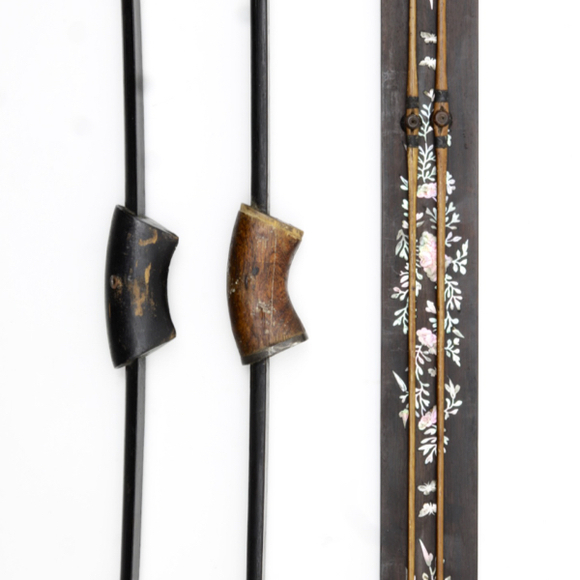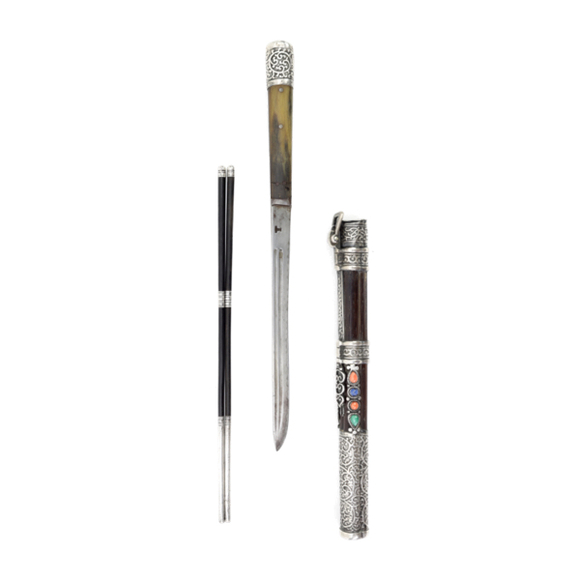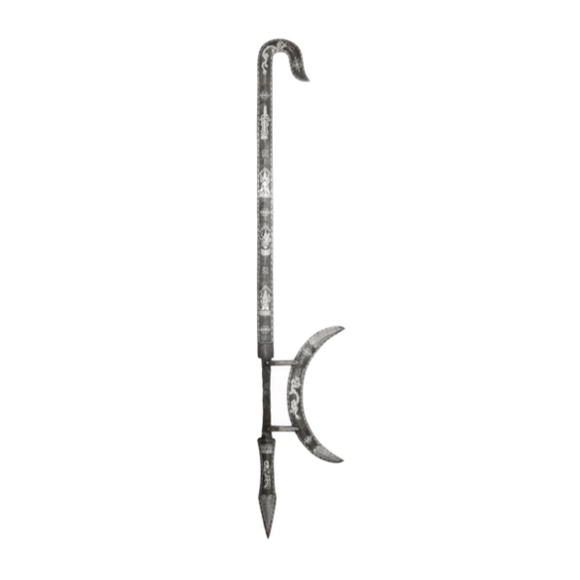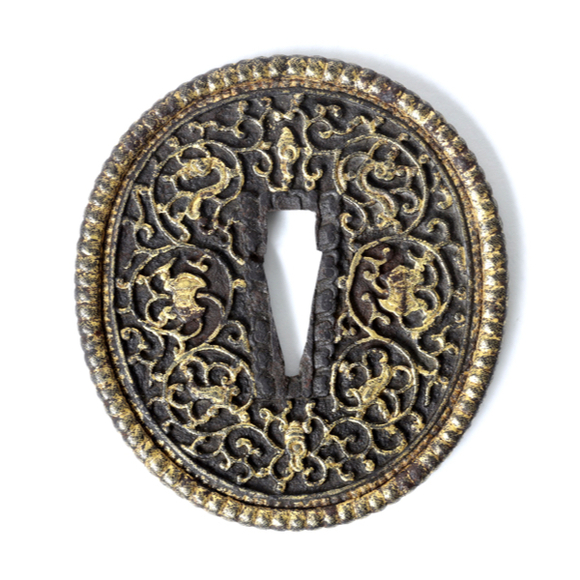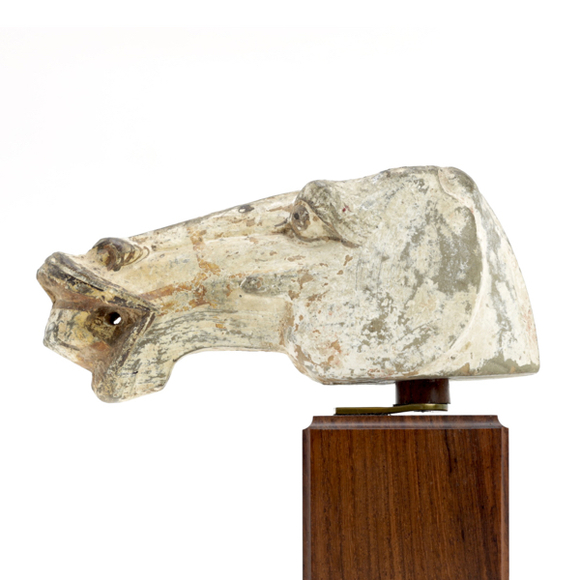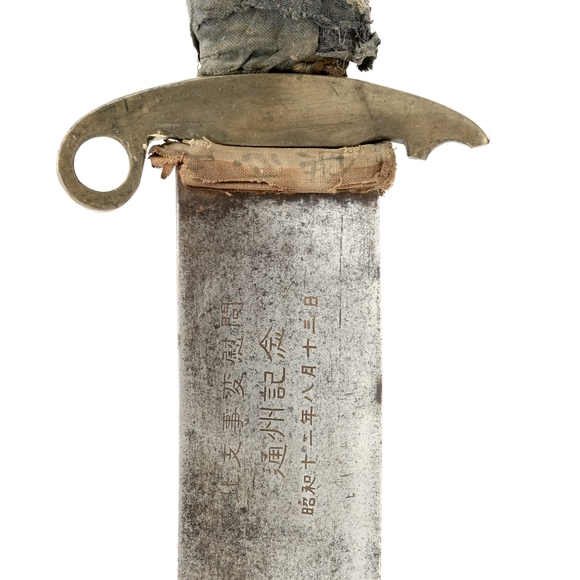Language: Mandarin Chinese
Source: In general use
Description
Gōng (弓) is simply the Chinese word for bow. As the shape of the character suggests, it originally meant to describe the Asian composite bow that was in widespread use throughout China's history but is used to describe any kind of bow used for archery.

A typical Qing dynasty (1644-1912) bow.
Sold by Mandarin Mansion in 2019.
First appearance
That composite bows appeared quite early can be determined from looking at old Shang dynasty (1600-1046 B.C.) oracle bone script where the profile of a short-eared composite bow with a pronounced setback in the grip can be observed:
 A Shang dynasty oracle bone (left) and a rubbing (right) showing an early depiction of a composite bow.
A Shang dynasty oracle bone (left) and a rubbing (right) showing an early depiction of a composite bow.
From: chinaknowledge.de
Qing dynasty bows
Historical sources make mention of a variety of bows. Here are some that I found in old Qing military texts and dictionaries. This list is not fully comprehensive.
Variations of composite bows
Shuǐniújiǎo miàngōng (水牛角面弓). A water buffalo horn faced bow.
Yěniújiǎo miàngōng (野牛角面弓). A wild buffalo horn face bow.
Huā shuǐniújiǎo miàngōng (花水牛角面弓). A patterned water buffalo horn faced bow.
Yěyángjiǎo miàngōng (野羊角面弓). A wild goat horn faced bow.
Niútígōng (牛蹄弓). Literally "Ox hoove bow". Possibly referring to a deep C shape when unstrung.
Yúsāigōng (魚腮弓). Literally "Fish gill bow". Possibly referring to a more relaxed C shape when unstrung.
Chángjiǎogōng (長角弓). Literally "Long horn bow".
Chánjīngōng (纏筋弓). Literally "Tied sinew bow". Possibly a sort of cable-backed bow.
Jiēnǎogōng (接腦弓). Literally "Connected brain bow". I suspect a bow with ears made out of one piece.
Tōngjiǎogōng (通角弓). Literally "All horn bow". Possibly the name for a bow made with a single long piece of horn.
Tōngmiàngōng (通面弓). Literally "Connected face bow". Same as above?
Tōngpágōng (通杷弓). Literally "All loquat bow". A bow made entirely with loquat wood?
Xīshuǐgōng (吸水弓). Literally "Absorbed water bow". (?)
Other bow types
Mùgōng (木弓), "Wooden bow".
Nǔgōng (弩弓), "Crossbow".
Shuāngjīnǔ (雙機弩), "Double trigger crossbow". Referring to a specific type of strong trigger mechanism.
Dàngōng (彈弓), "Pellet bow". Often smaller composite bows with special pellet shooting strings.
Terms taken from the Wuti Qingwen Jian (五體清文鑑) or "Five languages compendium", A Qing imperial dictionary in Manchu, Mongolian, Uighur, Tibetan, and Chinese of circa 1790.
Ming dynasty bows
Some of the bows mentioned in Ming dynasty texts. This list is not fully comprehensive.
Xiǎo shāo gōng, (小稍弓), "Short eared bow"
Tàipíng zhài gōng (太平寨弓), "Bow of Taiping Fortress"
Dà shāo gōng (大弰弓), "Large eared bow"
Kāiyuán gōng (開元弓), "New era bow"
Xī fān mù gōng (西番木弓), "Western Barbarian wooden bow"
Terms taken from the Wǔbèi Zhì (武備志) or "Treatise of Military Preparedness" compiled by Mao Yuanyi, 1621 and Wǔbèi Yàolǜe (武備要略) or "Important Military Outlines" by Cheng Ziyi, 1638.

